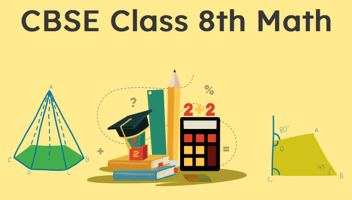Ensure that you are getting adequate sleep so you have the mental and physical energy to take on...
Ace the ACT - 5 Tips to Score 99 Percentile!
To Ace the ACT, you need to master each section's content, learn test-taking skills, and learn how to pace yourself so that you don’t burn out your brain in the middle of this three-hour exam.
The best way to practice these skills is to break them down into component forms, practice each component in semi-related ways, and ultimately take a full-length ACT practice or real exam once every week for at least two months.
It is important to note that many ACT practice exams do not capture the spirit or difficulty of the real test, and finding an online resource that contains old versions of the ACT is paramount.
ACT Exam Structure - The following table gives you a good idea about the flow of the examination on the test-day:
.jpeg?width=325&name=WhatsApp%20Image%202022-06-28%20at%204.41.32%20PM%20(2).jpeg)
ACT Exam Pattern - The ACT is composed of five sections- English, Mathematics, Reading and Science- and last for 3 hours and the last section which is optional, The Writing Test, which lasts for another 40 minutes, bringing the total exam time to 3 hours and 40 minutes, each section with a unique timing and question count.]

First Section- The English Section, tests your grammatical knowledge. This section is 45 minutes long and requires you to read through five passages, each with its own 15 questions. This brings the total question count on the English section of the ACT to 75 questions. Given only 45 minutes to complete these questions, the English section of the ACT is one of the most brutal with time, as you only have 36 seconds per question. To ace this section, you need to summarize, practice with, and memorize basic 10th-grade grammatical skills such as proper punctuation, and sentence structuring. I would strongly recommend using flashcards to study for this section
Second Section- The Math Section, tests your ability to do relatively simple math problems which you have likely been exposed to throughout your high school and middle school experience, primarily algebra, geometry, and trigonometry. This section is 60 questions long and provides you with 60 minutes to answer all questions. You have a generous 1 minute per question. You are allowed to use a calculator, so if you do not know your calculator well, and if you are not hyper-familiar with its features, this will be one of the hardest sections for you. If you are familiar with your calculator, you should heavily review the content of this section and practice with real ACT math problems in your own time. This should almost guarantee you a good score.
After the math section, there is typically a 10-minute break in the middle of the exam.
Third Section- The Reading Section, tests your reading comprehension under tight time pressure. You are given 40 questions, with four 800-900 word passages containing approximately 10 questions per passage, and are provided with 35 minutes to complete the section. This means that you are given approximately 8 minutes and 45 seconds per passage. While that may seem generous at first, this section can easily become one of the most difficult sections to master due to extreme time pressure while reading each passage. The faster you read the passage, the more time you have with questions, but the less you understand how to answer them. To crack this section, you should spend as much time as you can trying to quickly read books and practicing, as this section measures your ability to read and comprehend text quickly.
Fourth Section- The Science Section, is less about science and more about your ability to quickly analyze data and experiments for details and trends. This section consists of 40 questions, split among 5-6 passages, and you are given 35 minutes to answer each. This means you have approximately 52.5 seconds per question and approximately 6 minutes and 75 seconds per passage. Though this section is relatively easy given that you practice sufficiently, it falls near the end of the ACT and is, for that reason, usually affected by how awake you are at the moment you take it. To ace this section, you need to master the art of staying awake in the middle of a three-hour test, and you need to learn how to skim data and scientific text to analyze it for trends or information. Though skimming scientific text does feel different from skimming passages, your practice in the reading section should bleed over just a little bit here. The only real way to ace this section is to practice quickly skimming data, and the best way to do that is to practice this section relentlessly while skimming through text from real books in your own time.
Fifth and Final Section Of The ACT, also known as The Optional Section, is The Writing Section. If you do not opt into this section, the ACT will conclude for you at this point and you will only have spent 3 hours and 5 minutes taking your full-length ACT. If you do opt-in, however, your ACT time will be extended to 3 hours and 45 minutes due to this section. Many people choose not to take this section as it seems like unnecessary and extra work for very little payoff, however having this section recorded can make your ACT score more complete and more attractive to colleges. This advantage only exists, however, if you choose to take this section, so choose carefully. If you plan to apply to elite schools, you are much better off taking this section.
The optional writing section tests your ability to respond to a prompt or social issue in a clear, concise, and expansive handwritten essay. This section is 40 minutes long and consists of one prompt and three different perspectives on the prompt which you will, in an ideal world, expand upon and address in 3-5 paragraphs. To do well you must write an introduction paragraph in which you explain the perspectives that you agree or disagree with, as well as why each perspective is either correct, incorrect, or a mix of both. In your body paragraphs, you should cite personal anecdotes to expand upon and back up claims made in the introduction, and you should wrap each body paragraph up by restating your initial point in a new way. Finally, you must conclude your essay by summarizing your expanded views and the evidence which backs them up. I would strongly recommend creating a “skeleton essay”, an essay that is prewritten with no details or arguments filled in, to practice with beforehand, as it is a lot easier to write under a time crunch if you have already memorized most of the structure and wording. I would also recommend that you practice writing by hand, as it can be straining and take up valuable time.
The key to success on this test is remaining calm and alert throughout its duration. Becoming skilled in the English and Math sections of the test will help them seem less mentally draining, and will thus help you on the final stretch of the test. Learning to enjoy reading and fast data analysis will help make the final two sections more bearable despite how tired you probably will be. Practicing in an environment identical to your test-taking environment will help more than you think it will, so take the time to set up a timer, bring a watch, find an uncomfortable chair, and wear clothes you might wear to the real test. Eat a good breakfast on test day, and convince yourself that you are prepared.
Good luck!
About the author
Sanket is a freshman at Case Western Reserve University. An inventor mind and engineer at heart and soul. Sanket is an out-of-the-box thinker, a philosopher, and an innovator. Determined to create inventions that help mankind, Sanket is going to CWRU to build on his passion for learning, applying, and thriving in engineering.
Sanket has created many inventions on his own such as a google lens and many more, using his creativity by using old and broken household electronic devices, used batteries, and turning junk into creative and valuable solutions.
.png?width=100&height=100&name=Kapdec%20Logo%20(400px).png)


